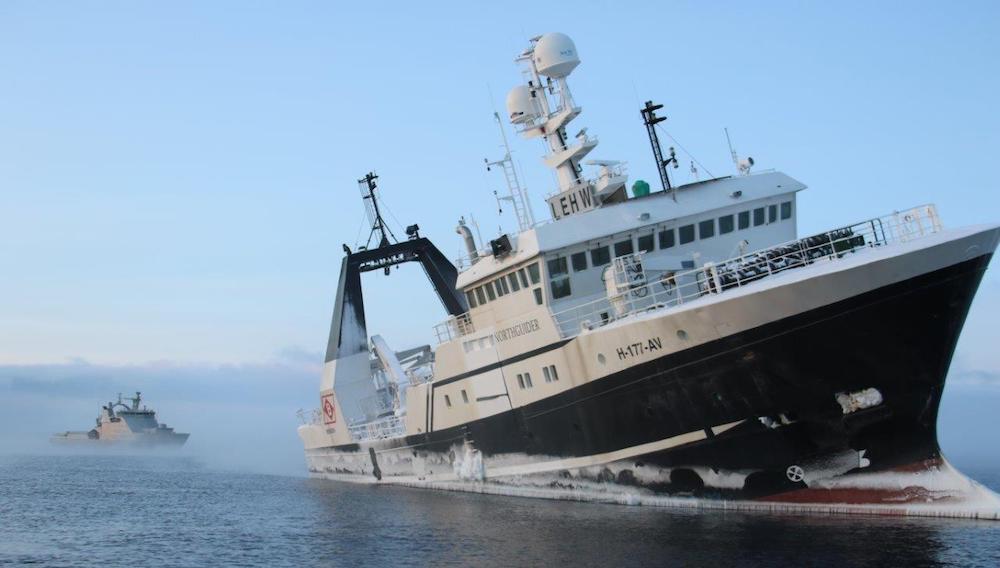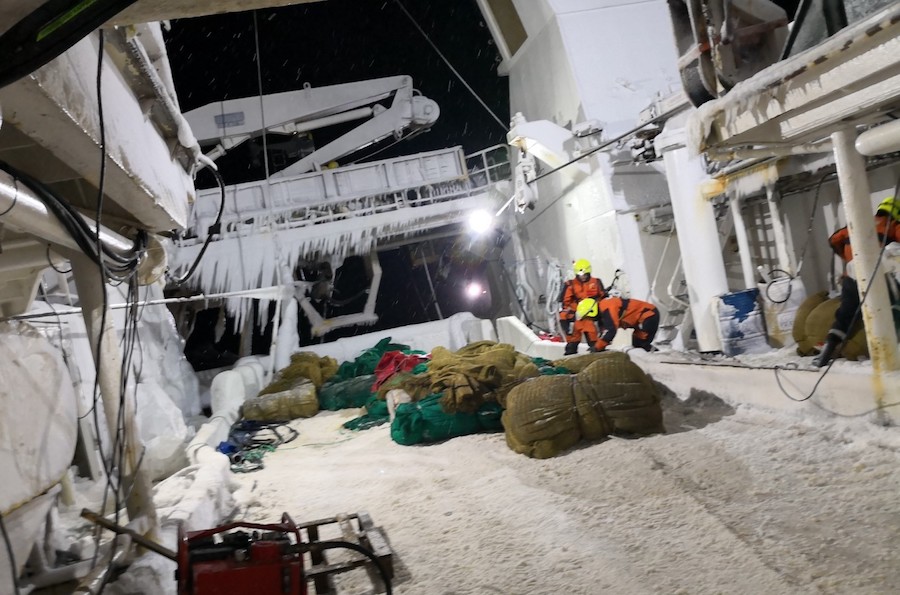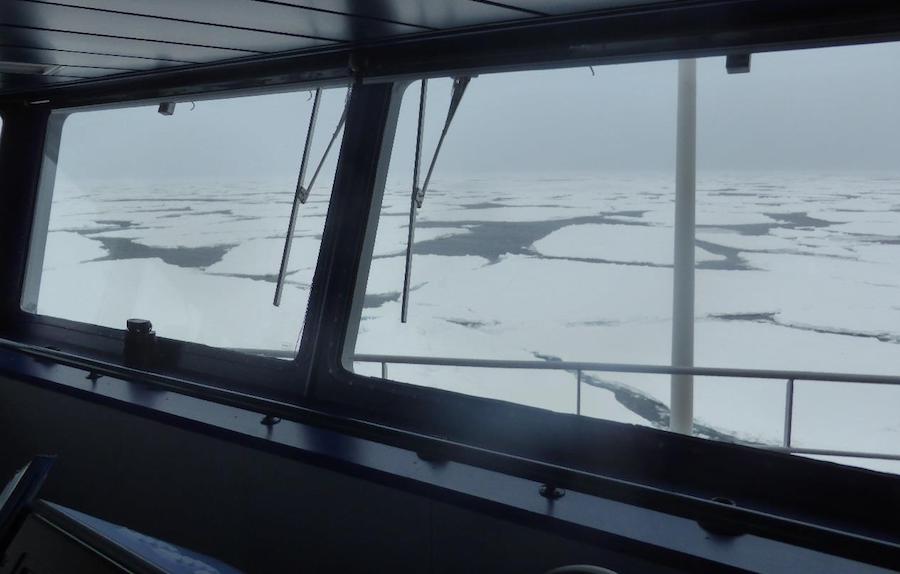The mission to salvage a stranded Svalbard fishing vessel is on hold until August
Moving the Northguider any time before late summer risks human lives and could threaten wildlife.

Norwegian coastal authorities say it is safest to let a shrimp trawler stranded in the waters north of Svalbard since December 28 to remain in place until August. The Northguider is resting safely in the Hinlopen Strait and no longer poses an environmental risk after a demanding Coast Guard operation earlier this winter to remove 300 tons of diesel fuel.
Originally, the Norwegian Coast Guard considered removing the ship at the same time, but later decided that the challenging, unpredictable weather and apparent temperatures below minus 40 degrees made such an operation unsafe for those taking part, and could result in the ship sinking while it was being towed.
Towing the ship during the spring or early summer was also ruled out at the recommendation of biologists, who said it risked disturbing sea birds that nest in the area at that time of year. In addition, the weather in August is generally stable, providing better working conditions than at other times of the year.
[Norwegian Coast Guard in race against ice after trawler runs aground near Svalbard]
Although the Coast Guard did not expect the Northguider to begin drifting, it said it had placed three tracking devices aboard the ship that would allow them to monitor its motion. Should the “worst” happen and the ship begin drifting, the devices would aid the Coast Guard as it tracked it down. During the fuel-removal operation, the Coast Guard also took steps to make it easier to tow the vessel and removed as many items as possible from the ship to prevent them from ending up in the water.
The efforts to secure the Northguider, according to Rune Bergstrøm, an official with Kystverket, the agency responsible for maritime safety and pollution response, were complicated by a lack of experience working in an area as remote as the Hinlopen Strait.
“As far as we know, there has never been a successful operation under such demanding conditions. This is learning by doing, and new problems related to the cold climate keep cropping up,” Bergstrøm said.
Underwater images taken while assessing the damage done to the Northguider when it ran aground showed that the engine room and a processing area were filled with water. The ship has been declared a total loss, but recovering it will aid in the investigation of why the accident happened, and provide rescue crews and investigators with valuable insight into operating in the region.
[Norwegian Arctic coastal waters are among the most dangerous]
Despite its remote location, fishing is common in the Hinlopen Strait. The initial response to the grounding, in which 14 crew members were rescued by helicopter, was later described as being at the far limit of what was possible, however, and has resulted in questions being asked about whether winter search-and-rescue capacity near Svalbard is adequate, particularly given the projected increase in the number of ships sailing in the area.
Although Sysselman, the territorial administration, has rescue helicopters at its disposal year-round, for example, its sole ship is mothballed during the winter as a money-saving measure. Meanwhile, the Coast Guard’s only icebreaking vessel is stationed on the Norwegian mainland, about 1,600 kilometers (about 1,000 miles) from the site and was not on the scene until a week after the Northguider ran around.
An investigation into the incident was completed in early February by the Sysselmann, and forwarded to national authorities for review. According to the ship’s owner, the reason for the grounding has been identified but will not be made public until the review is complete.

